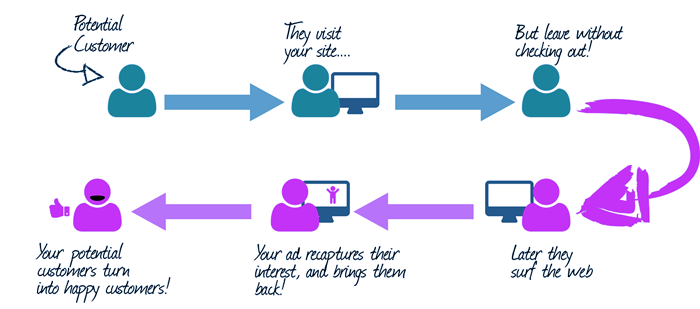Facebook Pixel: How to attract Visitors Back to your Website After they’ve Left
Retargeting, also known as remarketing, is a form of online advertising that can help you keep your brand in front of website visitors even after they have left your website.
For most websites, only 2% of web traffic converts on the first visit. Retargeting is a tool designed to help companies reach the 98% of users who don’t convert right away. This can be incredibly powerful, as it means you can now market to people who are already familiar with your brand.
Often, the first time someone visits your website, they are in “research phase” and are not necessarily ready to buy or make contact yet.
Retargeting allows you to stay in touch with them, keeping your brand top of mind so that, when they are ready to buy, they’ll be more likley to contact you rather than a competitor.
This quick video by Digital industry leader, Neil Patel, quickly explains everything you need to know about the Facebook Pixel:
Two main retargeting platforms online:
- Facebook remarketing
- Google display network retargeting
We’re going to be focusing on Facebook because it is more versatile and tends to get better results, particularly for local businesses. However, the Google display network can also be very powerful and effective at remarketing to your audience.
How does it work?
A small, unobtrusive piece of code is installed on your website (this code is sometimes referred to as a pixel). The code, or pixel, is unnoticeable to your site visitors and won’t affect your site’s performance. Every time a new visitor comes to your site, the code drops an anonymous browser cookie. Later, when your cookied visitors browse the Web, the cookie will let your retargeting provider know when to serve ads, ensuring that your ads are served to only to people who have previously visited your site.

Retargeting is so effective because it focuses your advertising spend on people who are already familiar with your brand and have recently demonstrated interest. That’s why most marketers who use it see a higher ROI than from most other digital channels.
Case study: Why is retargeting so effective?
Here is a personal story that I can share to show you how retargeting can be effective. I’m in the market for a new casual watch as my current watch is getting worn out. A few weeks ago I was searching Google for a black watch with a black leather band. I looked at a few websites, saw a few watches that piqued my interest, but was just busy at the time and didn’t end up purchasing anything at that moment. Technically, I was window shopping, as I wasn’t 100% sure which type of watch I wanted, how much I wanted to spend, and which brand I wanted to buy from.
A few days later, I started seeing these ads on Facebook:

This is one of the brands whose website I landed on when I was doing my search. I couldn’t tell you at the time of my search which brands I looked at, because I was quickly looking through several websites that I found on Google.
However, this particular brand is using retargeting, putting their product front and center on my Facebook feed, which has made me click their ad several times to check out their watches.
This is exactly how retargeting is designed to work. By showing the right ads to the right people time and time again, your brand gains more recognition and brings window shoppers like myself back by being ‘top of mind’.
Now imagine how powerful this would be for you marketing efforts.
You’re already doing so much hard work to get people to hear about you and return to your website. Why not take advantage of these visitors and start marketing to them, warming them up to you and your brand, while massively increasing the likelihood of them actually making a sale.
If you would like to find out whether this strategy would work for your business, contact us below:
Ready to GROW?
Contact us to find out what the best SEO options for your business are.

Recent Comments